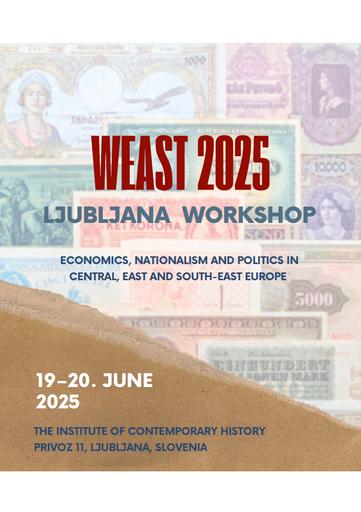/
Dogodki
/
Konference
Financial institutions in Bács-Bodrog county
Navigating the challenges of economic nationalism


To delo avtorja Nataša Henig Miščič je ponujeno pod Creative Commons Priznanje avtorstva-Nekomercialno-Deljenje pod enakimi pogoji 4.0 Mednarodna
Datoteke (1)
Opis
Interest in researching the phenomenon of nationalism and national identity is widespread and has existed for a long time. However, studies on the history of nationalism that emphasise the economic sphere as an integral part are less common. Economic nationalism was an essential part of the due process of nation-building in Central and Southeastern Europe. Before World War I, it operated primarily at the local level, fostering the development of domestic institutions and financial networks to secure domestic resources amid growing national tensions. It represented an alternative path to modernisation. The development of financial intermediaries became an essential factor in economic growth. Still, financial institutions served as a battleground for competing national movements, leading to the emergence of separate, parallel structures. The study focuses on the socio-economic landscape and examines how nationalist ideologies shaped financial practices and institutions, contributed to forming national identities and linked economic and political loyalties. This paper examines how economic nationalism influenced the development of financial networks in Bács-Bodrog County, a southern province in the Hungarian part of the Dual Monarchy. With more than 20,000 inhabitants, Novi Sad was a focal point of trade, crafts and cultural exchange. Its vibrant economy was supported by a flourishing grain trade, lively river traffic and a diverse commercial sector, making Novi Sad an important centre for the Serbian community in southern parts of Hungary. The Central Credit Institute of Novi Sad, founded in 1890 by the prominent Serbian businessman Laza Dunđerski, played an important role in Serbian banking. The analysis of this institution provides valuable insights into how microfinance networks influenced social and economic progress and shows how nationalist sentiments permeated financial practices. Such ideologies often served as tools to reinforce national identity, affect economic stability, and shape interethnic relations in the broader context of political change and modernisation. The findings reveal the complex interplay between economic policies, national identities and financial infrastructures during social and political upheaval. This research enhances our understanding of how economic nationalism shaped local financial practices and interethnic dynamics during the nationbuilding and social change period in the Austro-Hungarian Monarchy.
Metapodatki (11)
- identifikatorhttps://hdl.handle.net/11686/71104
- naslov
- Financial institutions in Bács-Bodrog county
- Navigating the challenges of economic nationalism
- avtor
- Nataša Henig Miščič
- soavtor
- Oliver Pejić (mod.)
- predmet
- finančne ustanove
- ekonomski nacionalizem
- gospodarstvo
- opis
- Interest in researching the phenomenon of nationalism and national identity is widespread and has existed for a long time. However, studies on the history of nationalism that emphasise the economic sphere as an integral part are less common. Economic nationalism was an essential part of the due process of nation-building in Central and Southeastern Europe. Before World War I, it operated primarily at the local level, fostering the development of domestic institutions and financial networks to secure domestic resources amid growing national tensions. It represented an alternative path to modernisation. The development of financial intermediaries became an essential factor in economic growth. Still, financial institutions served as a battleground for competing national movements, leading to the emergence of separate, parallel structures. The study focuses on the socio-economic landscape and examines how nationalist ideologies shaped financial practices and institutions, contributed to forming national identities and linked economic and political loyalties. This paper examines how economic nationalism influenced the development of financial networks in Bács-Bodrog County, a southern province in the Hungarian part of the Dual Monarchy. With more than 20,000 inhabitants, Novi Sad was a focal point of trade, crafts and cultural exchange. Its vibrant economy was supported by a flourishing grain trade, lively river traffic and a diverse commercial sector, making Novi Sad an important centre for the Serbian community in southern parts of Hungary. The Central Credit Institute of Novi Sad, founded in 1890 by the prominent Serbian businessman Laza Dunđerski, played an important role in Serbian banking. The analysis of this institution provides valuable insights into how microfinance networks influenced social and economic progress and shows how nationalist sentiments permeated financial practices. Such ideologies often served as tools to reinforce national identity, affect economic stability, and shape interethnic relations in the broader context of political change and modernisation. The findings reveal the complex interplay between economic policies, national identities and financial infrastructures during social and political upheaval. This research enhances our understanding of how economic nationalism shaped local financial practices and interethnic dynamics during the nationbuilding and social change period in the Austro-Hungarian Monarchy.
- založnik
- Inštitut za novejšo zgodovino
- datum
- 19. 06. 2025
- tip
- video
- jeDelOd
- pravice
- licenca: ccByNcSa
